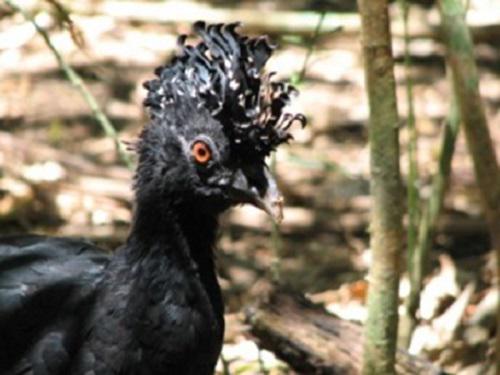Ariane Alvarez
This project aims to provide the first reliable population estimate of the endangered endemic Red-billed curassow and the results will contribute to Descobrimento National Park management plan and to environmental education activities.

Red-billed curassow.
The Red-billed curassow is endemic to Brazil’s Atlantic rainforest and is considered to be Endangered, both by IBAMA (Brazil’s National Environmental Agency) and by IUCN/BirdLife International. Due to illegal hunting and habitat loss it is estimated that there are no more than 250 wild individuals distributed in only six locations. From the alarming situation the curassow is, in 2004, the Brazil Program of BirdLife International, together with IBAMA developed an Action Plan for the conservation of the Red-billed curassow. Southern Bahia was highlighted in the Action Plan as needing conservation aid, particularly through the support of its protected area.
Descobrimento National Park is a very important reserve in southern Bahia as it is one of the remaining Atlantic rainforest fragments and is thought to hold one of the largest Red-billed curassow populations, even though the site suffers from hunting, fire and logging pressures. Because of this we have already begun to conduct linear transects in Descobrimento. However; we are having some difficulties because the species is very cryptic and lives at low densities.
This project will aim to provide the first-ever reliable population estimate of the Red-billed curassow and will greatly further our understanding of this threatened species. The camera trap images will not only benefit the conservation of the curassow but also the other fauna of Descobrimento National Park by aiding the production of a Management Plan for the park. The photographs will also be used for environmental education and to develop awareness of the plight of the Red-billed conservation among local communities in the surrounding Prado city district. Using images for this will be very important, as it will allow the general population to see this rarely-observed and secretive bird, hopefully promoting the engagement of the local people in conservation.